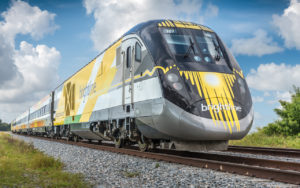 Bilzin Sumberg’s annual South Florida Redevelopment Conference brings together in- and out-of-state developers looking to explore new concepts and innovative approaches for achieving business success in South Florida’s real estate sector, as well as engineers, architects, planners, and government officials and staff engaged in real estate development and procurement in South Florida.
Bilzin Sumberg’s annual South Florida Redevelopment Conference brings together in- and out-of-state developers looking to explore new concepts and innovative approaches for achieving business success in South Florida’s real estate sector, as well as engineers, architects, planners, and government officials and staff engaged in real estate development and procurement in South Florida.
At this year’s virtual conference, Land Development & Government Relations partners Anthony De Yurre and Stanley B. Price hosted a fireside chat and discussed the history of Rapid Transit Zones in Miami-Dade County, the effects of the municipal devolution, and future trends for the development of RTZs.
Miami-Dade’s County’s first mass transit ordinances for Rapid Transit Zones (RTZs) were developed in the 1970s. Stanley Price served as a principle draftsmen for these laws, which initially gave the County total jurisdiction over rapid transit development within its borders. Subsequent devolution of some decision-making authority to local municipalities substantially altered the course of development in the County, while recent events have involved greater jockeying between the County and the municipalities over RTZs.
As my colleague, Anthony De Yurre, noted, we only have 7 miles of developable land between the eastern Everglades and the Atlantic Ocean, which is why the development trend recently has been toward mixed-use and transit-oriented development. Population growth and geographic constraint is pushing us towards greater density and more flexible land use and zoning regulations.
In 1956, the Florida State Constitution was amended to make Miami-Dade County a home rule County, and in 1957, the Miami-Dade County Home Rule Charter was adopted. With its adoption, the citizens of Miami-Dade County were granted the power, within certain areas, to adopt their own rules for governing, with the Board of County Commissioners acting as the governing body. These areas include zoning, planning, and Rapid Transit Zones, but these powers were not really exercised until the 1970s.
As my colleague, Anthony De Yurre, noted, “Rapid Transit Zones have been important incubators for development of the surrounding areas- look at the Dadeland Metrorail stop or the Brightline Station in Downtown Miami. They demonstrate what is possible with transit-oriented development.”
Unfortunately, as my colleague Stanley Price said, the planning of the original Metrorail lines was based more on politics at the time than the concept of value recapture, which focuses on factors such as population density and commute patterns. This is why a north corridor for the system was conspicuously absent despite its great potential for value recapture. Now, 40 years later, there’s impetus for new lines that make economic sense.
The County has started to embrace transit-oriented development and take control of planning., coming up with good incentives like intensity bonuses. Administrative site plan reviews by technical staff at the County have become more efficient for transit-oriented development than public hearings, which still requires architects to be creative and flexible in design to meet requirements for intensity bonuses.
This is essential to meet the needs of the County’s growing population and to allow Rapid Transit Zones to reach their full potential in facilitating the County’s economic development.